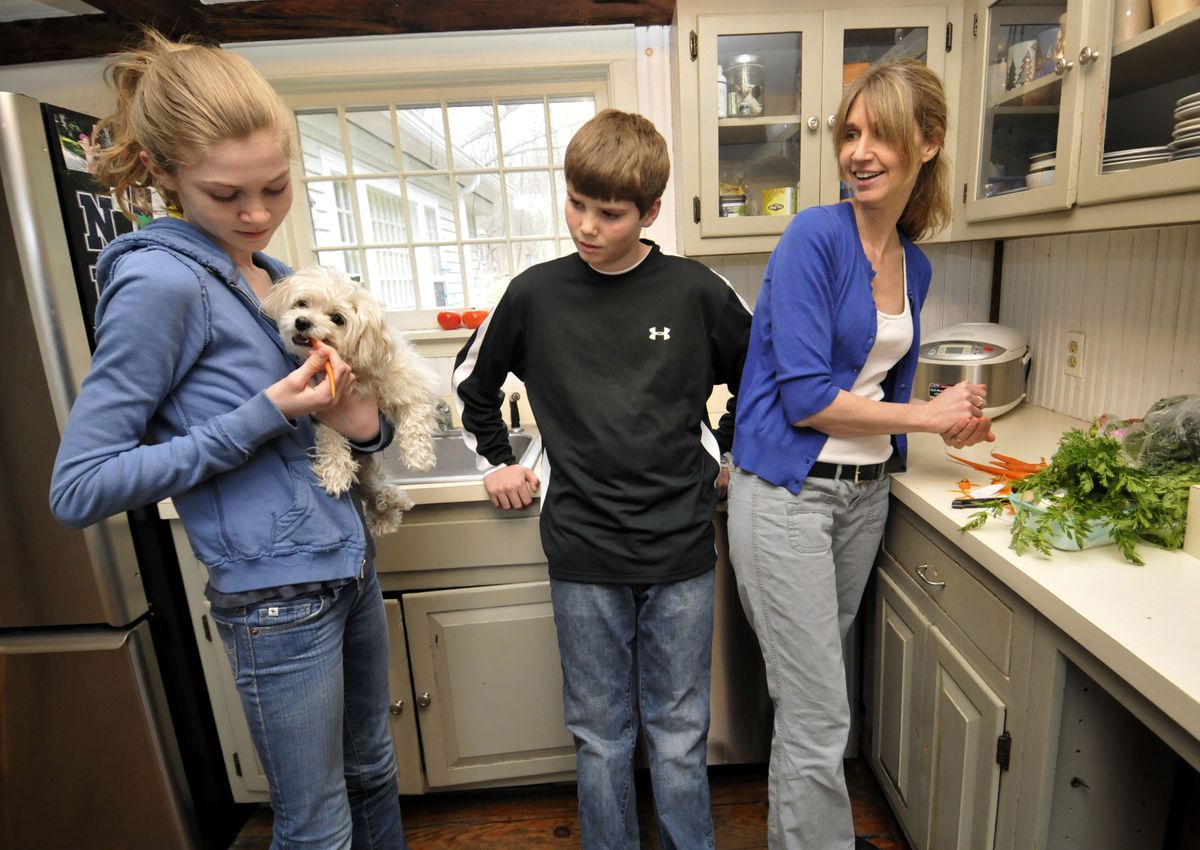Families seeking safe products help spawn green businesses

When Pamela Davis was pregnant with her daughter Meaghan, she started to worry about contamination from the lead paint in her Hoboken, N.J., row house.
Then she started reading about chemicals in plastic toys and baby clothes treated with flame-retardant.
Soon her entire nursery seemed to pose some mysterious threat to her impending bundle of joy. She was surrounded.
“Once you’re aware of one thing it just spreads and you start questioning everything,” Davis says. “You can drive yourself absolutely crazy trying to keep your baby healthy.”
Her predicament is familiar to many expectant parents. Alarmed by the recent flurry of recalls of toys tainted with lead paint or unsafe plastic, families are trying to make careful choices about the toys and surfaces that surround their babies, the air they breathe and the food they eat.
A green baby industry has sprung up in the last decade to cater to like-minded parents looking for products that are safe for kids and gentle on the Earth.
It’s a concern common enough that eco-babyproofing services have spread across the country, typically run by public health professionals who can give a house a thorough once-over to find evironmental threats and offer remedies.
Eco-proofing a nursery, especially to reduce babies’ exposure to certain kinds of plastics, “absolutely makes a lot of sense,” says Dr. Philip Landrigan, a pediatrician and director of the Children’s Environmental Health Center at Manhattan’s Mount Sinai School of Medicine.
Landrigan advises pregnant women and new parents to pick baby toys and other products that are free of phthalates and bisphenol A, even though information about the effects of these chemicals is still largely unknown.
Congress recently imposed tough standards for phthalates in products for children 12 and younger. Some scientists believe that long-term exposure to BPA is harmful to humans, but the European Union and the U.S. Food and Drug Administration say the chemical is safe.
Still, Landrigan and other experts say that data from experiments on animals suggest that parents take a hard look at the plastic near their babies, from sippy cups to bouncy chairs, while recognizing that danger does not lurk around each corner of the playpen.
“It’s important for parents not to feel the products in their homes are dooming their children,” says Janie Fields, executive director of the Children’s Environmental Health Institute.
She recommends that parents discuss environmental risks with their pediatricians.
For Davis, it was important to surround her family with ecologically friendly products and foods that nurture both the planet and her three children, now 14, 12 and 10.
In 2003, the Davis family created Our Green House, an online store that sells all the trappings of a green nursery: pacifiers made from natural rubber, organic wool receiving blankets, cradles crafted from sustainable wood, organic formula and glass baby bottles for that organic formula. New products appear every few months.
The sheer volume of environmentally friendly products can be overwhelming for the uninitiated. Just ask Jennifer Smith, 33, who began to move her Greenville, S.C., family in a green direction last year.
She decided to start by simply buying fewer processed foods for her children aged 13, 6 and 4. But on her first trip to the store she quickly encountered another problem with eco-friendly goods: the expense.
“Organic fresh produce alone costs twice as much at least,” Smith says.
The recent economic downturn limited both her husband’s construction jobs and her forays into Whole Foods.
“Instead we’ve started to look for ways to be environmentally friendly that don’t strain the budget,” she says.
Alexandra Zissu, 34, co-author of “The Complete Organic Pregnancy,” concedes the cost of organic food is prohibitive for many families. But she stresses that going green does not have to be an expensive prospect.
“The whole point of the green movement is to have less stuff, not more,” she says. “Many green choices are completely free.”
Zissu, who offers eco-babyproofing services in New York City, says her number one eco-friendly tip is for families to take off their shoes when they come home and leave them by the door.
Dirty shoes track in industrial grime, oil from cars and pesticide run-off, all of which can find their way right into the mouths of rolling, crawling little ones.
Some eco-friendly versions of products are actually cheaper. Zissu estimates she saved hundreds of dollars by outfitting her now 3-year-old daughter in reusable cloth diapers.
She swapped plastic teething toys for frozen sticks of organic celery, and replaced bottles of harsh cleaners with a mixture of baking soda, vinegar and water.
“It’s probably not so important to focus on having everything perfectly organic or perfectly new,” says Janie Fields, executive director of the Children’s Environmental Health Institute.
Parents instead should educate themselves on the toxins already present in their homes, things like lead paint or radon, she says.
Jenn Savedge, author of “The Green Parent: A Kid-Friendly Guide to Environmentally-Friendly Living,” encourages families to pick and choose ideas that meet their individual needs.
“Parents are juggling money and soccer practice or up all night with a baby,” she says. “Those are things that can make any one of us say ‘Forget it, I don’t feel like recycling today.’ ”
So, as with many aspects of parenting, compromise is important. Parents might decide to use cloth diapers and wipes, but switch to more absorbent disposables at night, to help sleeping babies stay asleep.
Savedge’s own playroom includes both organic toys and decidedly nonorganic ones from her in-laws, who love to give her daughters Emily, 6, and Erin, 3, “tons of pink plastic.”
And, as her children grow older, the eco-friendly choices Savedge made to keep her infants safe have become opportunities to teach stewardship.
“It’s easier and more fun when it’s something we’re doing together as a family,” Savedge says.
“My 6-year-old gets excited about it now. She says, ‘Mommy, I’m protecting the planet!’ ”